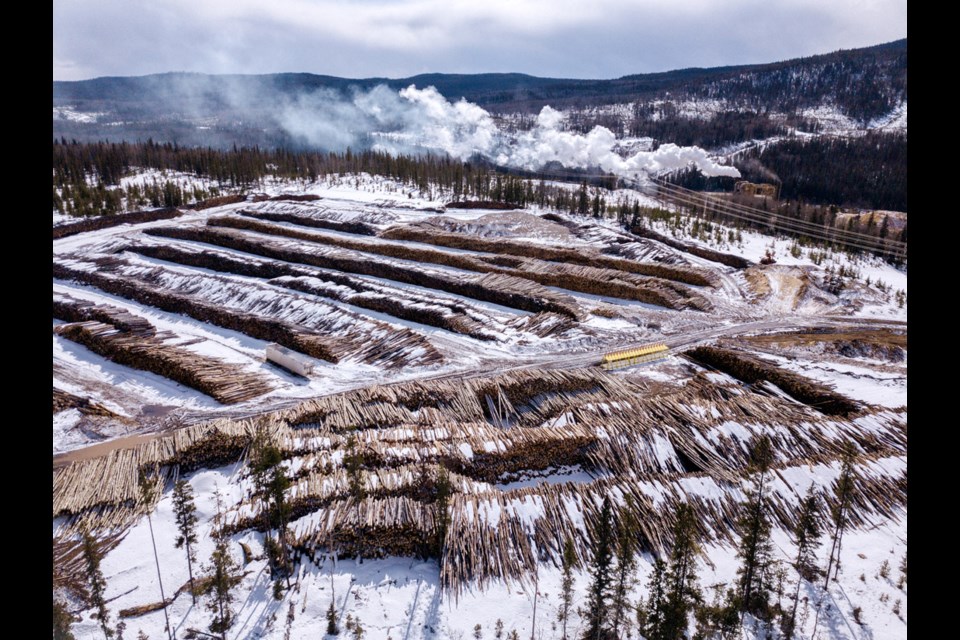The sight of pellet plants along Highway 16 West awash in "whole trees" is raising alarm bells for groups concerned the mills are using more than just wood waste to produce their product.
Pellet plants are traditionally considered the go-to spot for material for which sawmills and pulp mills have no use.
But photos of piles of logs at plants in Smithers, Burns Lake and Houston were released this week along with a report from the Canadian Centre for Policy Alternatives questioning whether the region's timber supply is being put to its best use.
Report author Ben Parfitt, as well as a handful of environmental groups and a union representing forestry workers, are calling on the provincial government to halt approvals of any new pellet manufacturing facilities pending a review of what the industry is converting into pellets.
"We're calling for a thorough independent analysis of how many logs are going to the pellet industry and what kind of logs those logs are," Parfitt said in a interview.
Nechako Lakes MLA and the B.C. Liberals' forestry critic John Rustad said the piles have been a common sight as he has driven along Highway 16 and that unless things have changed since the NDP took power, the plants are relying exclusively on logs too dry or too defective to be processed by sawmills.
"I don't have a concern with that," Rustad said.
Parfitt acknowledged that many of the logs shown in the photos are "incredibly small diameter logs that would not be suitable for a sawmill but there are also larger-diameter logs in there that could be run through a sawmill."
Exactly what percentage are sawmill-worthy, Parfitt could not say.
"That is a question I can't answer but I'm just saying that I think that one just has to be cautious in accepting at face value that there is nothing else that could be done with the wood," Parfitt said.
The three plants depicted in the photos are owned by Pinnacle Pellet, which also owns plants in Quesnel and Williams Lake.
British energy company Drax, owner of the the world’s largest pellet-fueled power station, located in the United Kingdom, is in the process of acquiring Pinnacle for $831 million.
Pinnacle spokesperson Karen Brandt said the company relies entirely on residuals left from sawmilling or harvesting or from fibre that has been rejected by the primary producers including pulp mills.
"We should all be advocating for better forest policy to address the millions of cubic metres of slash left in the forest to burn every year; this will be a focus of our efforts going forward," she added in an emailed reponse.
In answer to a request for comment on the report, a spokesperson at the Ministry of Forests, Lands, Natural Resource Operations and Rural Development did not directly address the call for a review and a halt on new permits.
The spokesperson did say prices for lumber and pulp are on the rise and that competition for fibre will help direct the material to its best use.
"At the same time, the ministry monitors the quality of the logs that are delivered and consumed by all timber processing facilities in British Columbia," the spokesperson said.
"We try to make sure that the right log gets to the right facility, while low quality, lower-value logs and residuals are being used in pellet mills."
With respect to the percentage of trees used for wood pellets in 2020, 540,000 cubic metres was delivered from the bush to pellet plants in B.C. Of that 200,000 cubic metres was pine beetle wood.
"This represents approximately 1.2 per cent of the provincial timber harvest that went directly to a pellet plant in 2020," the spokesperson said.



